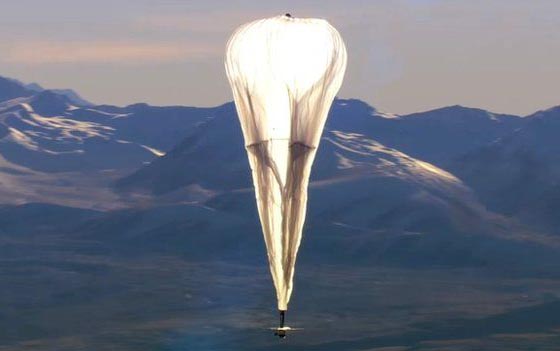NEW DELHI: Google will test its Loon technology aimed at facilitating access to internet in remote areas and in case of disasters, next in Indonesia. It will partner with Indonesia's XL Axiata, Indosat and Telkomsel to connect the archipelago's thousands of islands and their jungles and mountains.

The new tech is cheaper than installing fibre optic cables or mobile towers in all the Indonesian islands. The balloon-based system is also cheaper to maintain compared to satellites having a comparable speed of 4G, flying at 60,000 ft high into the stratosphere. The balloon is composed of polyethylene plastic filled with helium and has a dimension of 15 metres across and 12 metres height when fully inflated.
A box weighing 10 kg with electronic equipment hanging underneath will have a computer, solar battery and other gears. This will connect with Internet antennas on the ground. The balloon has a solar power storage which helps it operate at night too.
The Loon project being developed by Google X has the mission of providing Internet access to rural and rmote areas, creating an aerial wireless network.
The project was officially announced as a Google project on June 14, 2013. Soon after, Google began a pilot experiment in New Zealand where about 30 balloons were launched and tested successfully.
What is Project Noon?
Two-thirds of the world’s population does not yet have Internet access. Loon is a network of balloons travelling on the edge of space, designed to connect people in rural and remote areas, and help people after disasters.
Google says, "the Loon balloons float in the stratosphere, twice as high as airplanes and the weather. In the stratosphere, there are many layers of wind, and each layer of wind varies in direction and speed. Loon balloons go where they’re needed by rising or descending into a layer of wind blowing in the desired direction of travel. By partnering with Telecommunications companies to share cellular spectrum we’ve enabled people to connect to the balloon network directly from their phones and other LTE-enabled devices. The signal is then passed across the balloon network and back down to the global Internet on Earth."
The balloon envelopes are made from sheets of polyethylen and the gas is released from the envelope to bring the balloon down to Earth in a controlled descent. There is also a parachute to control speed down.
How does Loon connect?
The customers of the service connect to the balloon network using a special Internet antenna attached to any building on the ground. The signal travels through the balloon network, from balloon to balloon, then to a ground-based station connected to an Internet service provider (ISP), then onto the global Internet.
The balloons travel 20 km above the Earth’s surface in the stratosphere. The layers of wind there vary in speed and direction. Loon uses software algorithms to determine where its balloons need to go. Project Loon is able to take advantage of the stratosphere’s steady winds and remain well above weather events, wildlife and airplanes.
A balloon can provide connectivity to a ground area about 40 km in diameter using a wireless communications technology called LTE. The project partners with telecommunications companies to share cellular spectrum so that people will be able to access the Internet everywhere directly from their phones.
The new Internet technology is likely to be a challenge to Facebook's 'dot org' and 'free basics' business plans for developing countries.